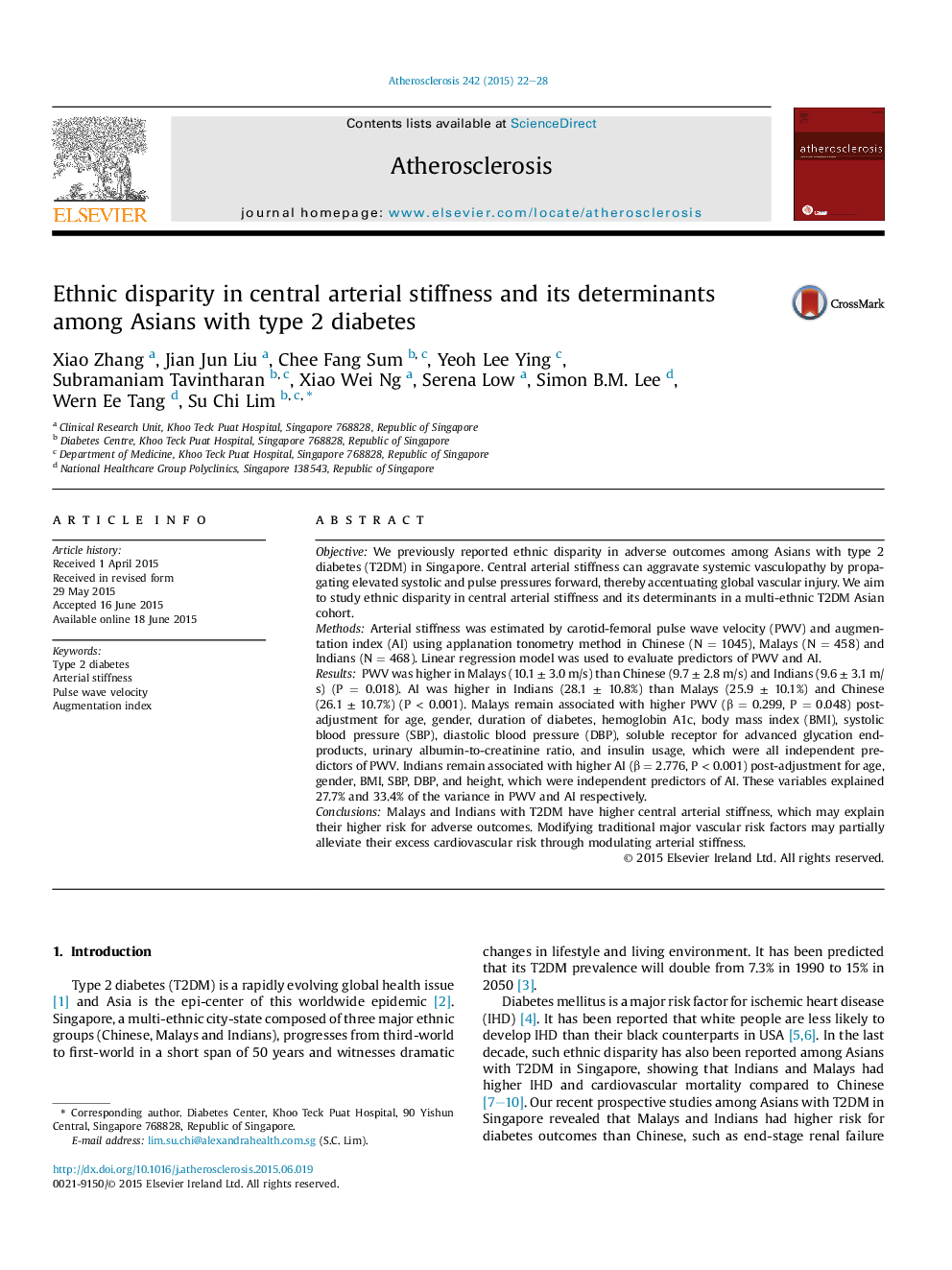| کد مقاله | کد نشریه | سال انتشار | مقاله انگلیسی | نسخه تمام متن |
|---|---|---|---|---|
| 5944073 | 1172341 | 2015 | 7 صفحه PDF | دانلود رایگان |
- We examined ethnic disparity in central arterial stiffness among Asians with T2DM.
- Malays and Indians have higher PWV or AI post-adjustment for vascular risk factors.
- The increased arterial stiffness may explain their increased adverse outcomes.
ObjectiveWe previously reported ethnic disparity in adverse outcomes among Asians with type 2 diabetes (T2DM) in Singapore. Central arterial stiffness can aggravate systemic vasculopathy by propagating elevated systolic and pulse pressures forward, thereby accentuating global vascular injury. We aim to study ethnic disparity in central arterial stiffness and its determinants in a multi-ethnic T2DM Asian cohort.MethodsArterial stiffness was estimated by carotid-femoral pulse wave velocity (PWV) and augmentation index (AI) using applanation tonometry method in Chinese (N = 1045), Malays (N = 458) and Indians (N = 468). Linear regression model was used to evaluate predictors of PWV and AI.ResultsPWV was higher in Malays (10.1 ± 3.0 m/s) than Chinese (9.7 ± 2.8 m/s) and Indians (9.6 ± 3.1 m/s) (P = 0.018). AI was higher in Indians (28.1 ± 10.8%) than Malays (25.9 ± 10.1%) and Chinese (26.1 ± 10.7%) (P < 0.001). Malays remain associated with higher PWV (β = 0.299, P = 0.048) post-adjustment for age, gender, duration of diabetes, hemoglobin A1c, body mass index (BMI), systolic blood pressure (SBP), diastolic blood pressure (DBP), soluble receptor for advanced glycation end-products, urinary albumin-to-creatinine ratio, and insulin usage, which were all independent predictors of PWV. Indians remain associated with higher AI (β = 2.776, P < 0.001) post-adjustment for age, gender, BMI, SBP, DBP, and height, which were independent predictors of AI. These variables explained 27.7% and 33.4% of the variance in PWV and AI respectively.ConclusionsMalays and Indians with T2DM have higher central arterial stiffness, which may explain their higher risk for adverse outcomes. Modifying traditional major vascular risk factors may partially alleviate their excess cardiovascular risk through modulating arterial stiffness.
Journal: Atherosclerosis - Volume 242, Issue 1, September 2015, Pages 22-28
